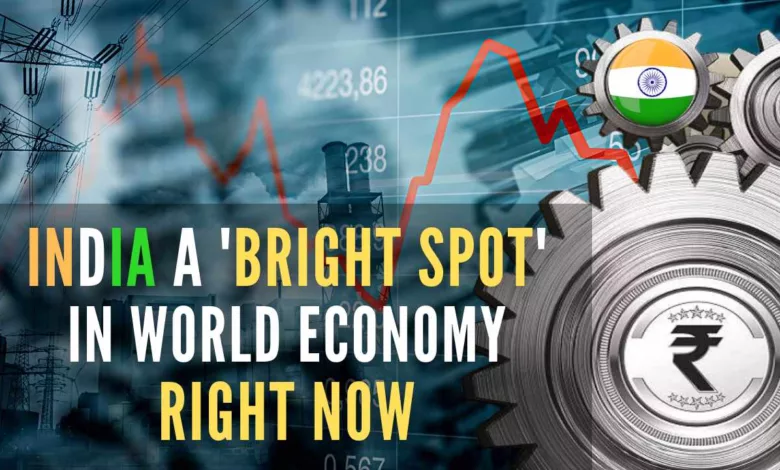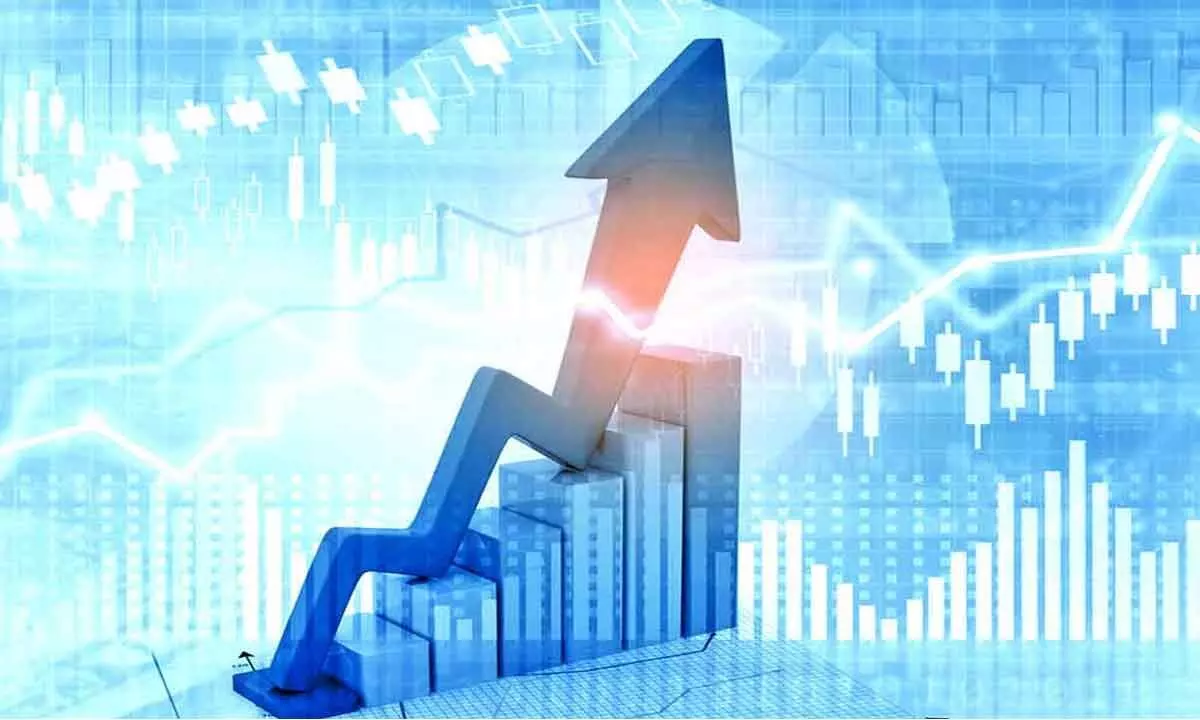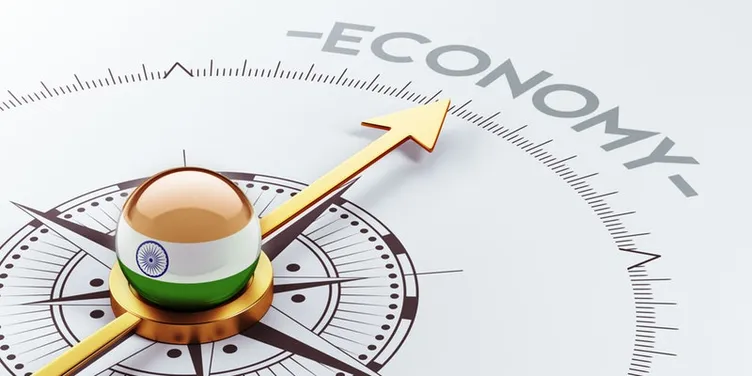According to a leading UN economist, the Indian economy is currently a “bright spot.”

India is becoming a “bright star” in the world economy, according to a top UN economist, and is in a “strong position” since it is expected to expand at a very high pace of 6.7% in subsequent yr. in comparison to different G20 members.
The Director of the United Nations Department of Economic and Social these statements were given with the aid of using the Global Economic Monitoring Branch of Affairs’ Economic Analysis and Policy Division. Rashid stated during a press conference here on Wednesday at the presentation of the International Economic Situation and Prospects 2023 report, “I suppose India is a vibrant spot inside the global economic system proper now. 
The central argument of the paper is that rising interest rates and the global economic crisis would weigh on investment and exports, causing India’s GDP to moderate to 5.8% in 2023. Even if the outlook for other South Asian countries is “more challenging,” India’s economic development is anticipated to remain “solid. The world’s fastest-growing major economy, India, is predicted to grow at a rate of 6.7% in 2024. We think the Indian economy is in good shape, according to Rashid, given the robust domestic demand in the foreseeable future.
He cited that India’s monetary growth, which is predicted to boom to 6.7% in 2024, is “quite strong growth relative to other G20 member countries. Argentina, Australia, Brazil, Canada, China, France, Germany, India, Indonesia, Italy, Japan, the Republic of Korea, Mexico, Russia, Saudi Arabia, South Africa, Turkiye, the United Kingdom, and the United States make up 19 of the Group of Twenty (G20), together with the European Union.”This growth rate is sustainable for India. In India, a large share of the population is also impoverished. “India’s ability to maintain this growth rate shortly would be advantageous for the global fight against poverty and the Sustainable Development Goals,” added Rashid.
The lead author of the paper, Rashid, gave three reasons for India’s present economic success in response to a query on the Indian economy. He stated that India’s jobless rate, that’s at 6.4% and lower than it was in 2017, has decreased considerably over the past four years. He explained, “That suggests the domestic demand has been fairly robust. Indian inflation is also expected to be about 5.5% this year and 5% in 2024, according to analysts, despite having “relaxed rather considerably.
This would spare the country’s central bank from having to seek drastic monetary tightening, according to Rashid. The country of India benefits from lower import costs as well. The cost of energy imports in particular has decreased from prior years. Additionally, this has improved India’s economic prospects for 2022 and 2023, he added. Rashid outlined “downside risks” for India’s development prospects shortly and claimed they had a ripple effect.
“India’s debt service costs have topped 20% of the budget, which is a very high debt servicing cost and would have some negative effects on the chances for growth. He claimed that overseas demand poses yet another risk to the Indian economy. India’s exports to the global economy may suffer if “Europe enters into a very sluggish development phase,” and the US is also in a circumstance where this is the case.

According to the report, the present recession is a threat to many countries and has slowed down the financial recovery from the COVID-19 catastrophe. both established and emergent, with the possibility of a recession in 2023 because of high inflation, sporadic monetary tightening, and generalized anxiety. By 2022, the impetus for growth in the United States, the European Union, and other rich countries had significantly slowed down, which negatively impacted the remainder of the global economy in several ways.
The timing and severity of any monetary tightening, the outcome and consequences of the Ukraine conflict, the potential for more supply-chain disruptions, and all of these factors play a significant role in this. According to a report, the high price of food and energy, monetary tightening, and budgetary difficulties are to blame. The UN Department of Economic and Social Affairs reports a severe decline in South Asia’s economic prospects (UNDESA). It is anticipated that GDP growth would decelerate from 5.6% in 2022 to 4.8% in 2023.
For different economies in South Asia, “potentialities are extra daunting. The economic prospects for South Asia have significantly deteriorated, according to the UN Department of Economic and Social Affairs (UNDESA). While the United States is predicted to have a 0.4 economic growth this year and a 1.7% growth in 2024, China is predicted to grow at a rate of 4.8% in 2023 and 4.5% in 2024.
According to the report, the present recession is a threat to many countries and has slowed down the financial recovery from the COVID-19 catastrophe. both established and emergent, with the possibility of a recession in 2023 because of high inflation, sporadic monetary tightening, and generalized anxiety. By 2022, the impetus for growth in the United States, the European Union, and other rich countries had significantly slowed down, which negatively impacted the remainder of the global economy in several ways.
In India, annual inflation is projected to attain 7.1% in 2022, exceeding the medium-term target range of 2 to 6% set by the central bank. India’s inflation is anticipated to drop right down to 5.5% in 2023 as commodity prices stabilize globally and imported inflation is lessened by slower currency depreciation. In 2022, the majority of emerging nations experienced a sluggish job recovery and are still dealing with significant employment slack. Inequitable losses in women’s employment during the early phases of the pandemic, per the research, have, not yet been entirely reversed, with improvements mostly coming from a rebound in unofficial employment.
The study recommends governments refrain from financial restriction since it will impede development and unfairly affect the most underprivileged groups hinder the promotion of gender equality and obstruct prospects for future development. It suggests reallocating and re prioritizing public spending through direct policy changes that will boost growth and generate jobs. It was argued that more robust social protection mechanisms would be required to accomplish this. These systems would have to provide continual assistance via temporary and targeted subsidies, cash transfers, and reductions on utility bills, which might be combined with decreased consumption taxes or customs tariffs.
India’s progress toward a third-place economic status
India’s streak of success continues with a V-shaped recovery following the pandemic shocks, and it is projected that her economy will repeat a similar development trajectory in 2023. One of the numerous confirmations Indian policies and reforms have gotten recently is the World Bank’s modification of the country’s GDP growth predictions from 6.4% to 6 9% for the current fiscal year. India’s “remarkably resilient” economy has been attributed by the World Bank’s India Country Director, Auguste Tano Kouame, to the country’s solid macroeconomic fundamentals.
According to predictions made by the Indian government, the country would develop by 7% in the fiscal years 2022–2023. According to the Ministry of Statistics and Program Implementation, this is no minor accomplishment given that many nations throughout the world are struggling with complex economic challenges. The Ministry of Statistics and Program Implementation predicts that the nominal GDP of the nation will increase by 15.4%.
According to economists, the government’s policy reforms—the Production-Linked Incentive Scheme (PLI) and the PM Gati Shakti being the two most successful ones—have been crucial in achieving favorable outcomes for the Indian economy. “Exports of manufactured goods can be significantly increased by using production-linked incentives. “There is no question that it will play a significant role in the transfer of manufacturing from an area of the world where it is concentrated to India and other locations, and India would greatly benefit from such policies,” according to the investor and author Harsh Madhusudan.
India has effectively balanced the development of its infrastructure and social programs. Particularly since the pandemic breakout, India has been able to provide food security for millions of people, and in the past few years, the nation’s physical infrastructure has undergone a complete metamorphosis. The already booming Indian economy is expected to grow even faster as a result of the record-breaking rate at which motorways are being built, together with new freight lanes. 
India plans to reduce its logistics costs from 14% to 8% during the next five years, or by 6 percentage points. According to the National Logistics Policy, this would ensure that logistics serve as an economic growth engine for India. Improved logistics would help India’s reputation as an investment destination grow as efforts are made to loosen restrictions on foreign direct investment (FDI). India is expected to get 100 billion USD in FDI for the first time this fiscal year.
Edited by Prakriti Arora




